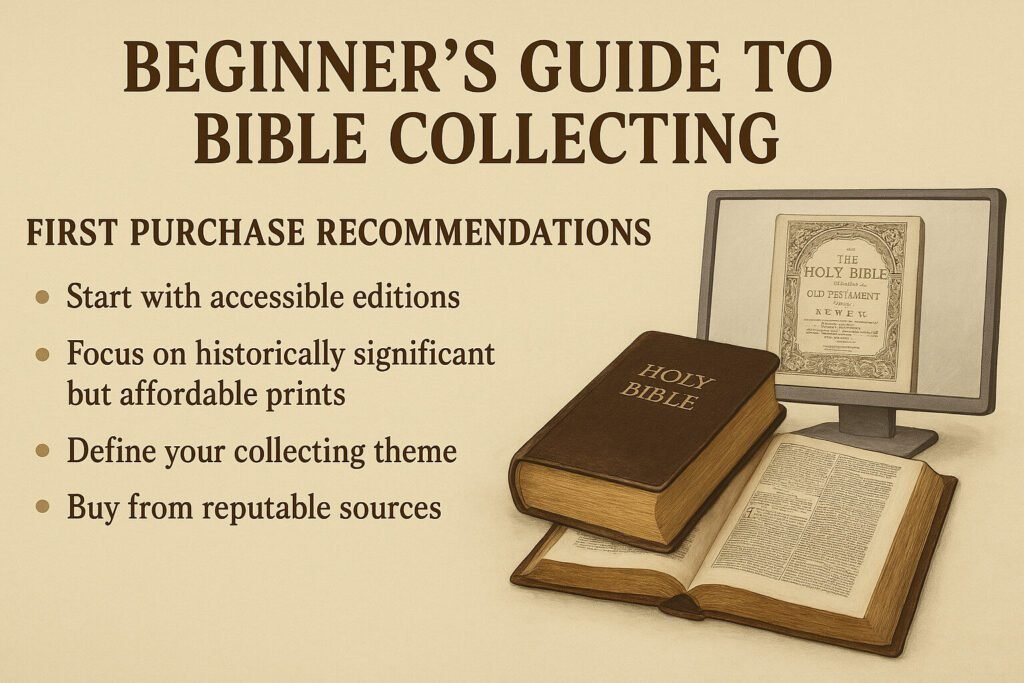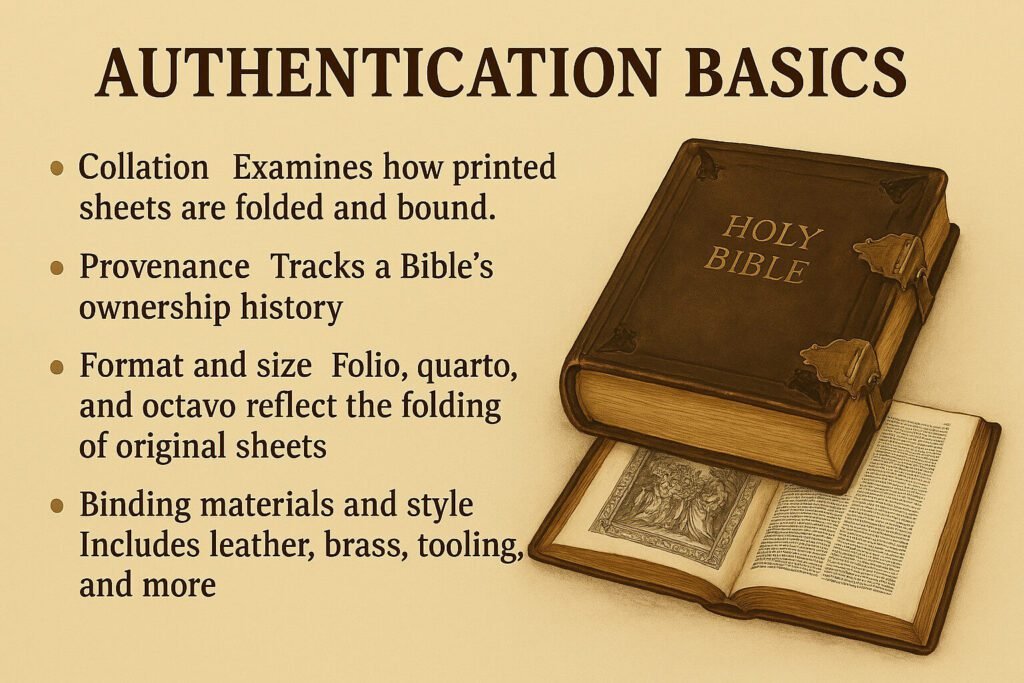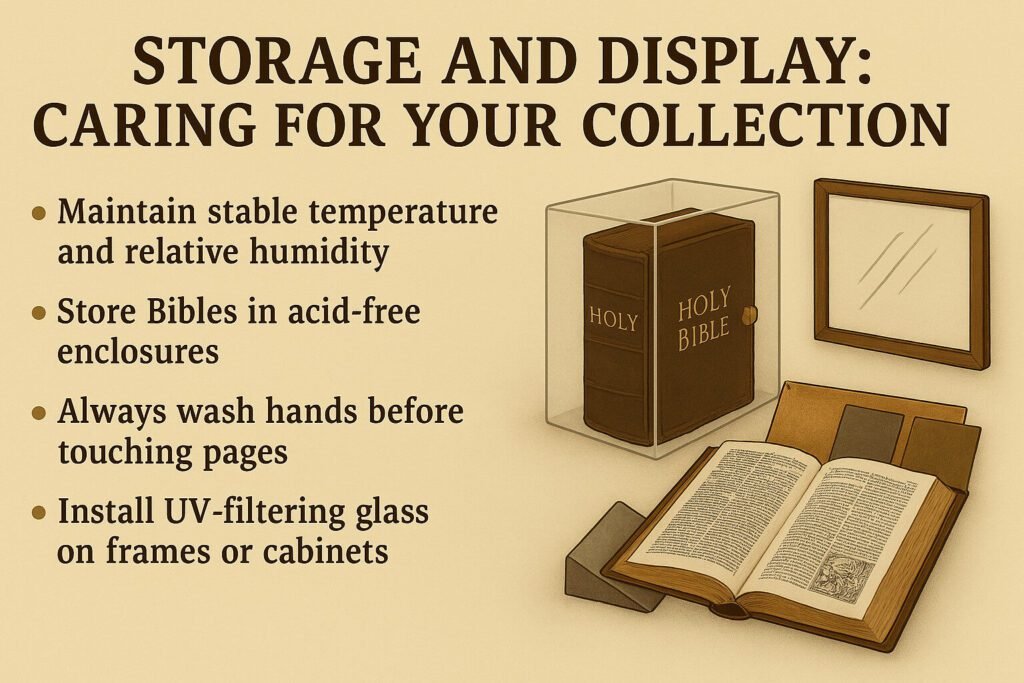Embarking on Antiquarian Bible collecting for beginners is a journey that combines history, art, and faith. Whether you want to start an Antiquarian Bible collection as a meaningful hobby or are planning your first antique Bible purchase, this guide will help you build a confident foundation.
Getting Started: First Purchases Recommendations

Start Affordably: Start with affordable options, such as less rare editions that still hold significance. This allows you to gain experience before investing in rarer, more valuable pieces.
Focus on historically significant but affordable: Early English editions offer rich provenance and marginalia yet often trade at moderate prices compared to rare first-edition King James or Geneva Bibles.
Define your collecting theme: Zero in on a translation (e.g., Geneva, King James), a format (folio, quarto, octavo), or a geographic origin. A clear focus streamlines purchasing decisions and deepens your appreciation of each volume’s context.
- Buy from reputable sources Seek out specialized dealers and vetted online platforms with transparent descriptions and return policies like BibleBulldog.com.
Authentication Basics: Assuring Your Bible is Genuine

- Publication Date: The age is crucial. Bibles printed before the 19th century are generally considered antique. Use tools to decode Roman Numerals often used for dates.
- Illustrations and woodcuts: Early editions often include woodcut engravings or hand-colored maps. Quality of the cuts, ink depth, and paper texture point to authenticity and print era. Examine any illustrations or handwritten notes for clues about the Bible’s origin and history.
- Collation: Examines how printed sheets are folded and bound. Accurate collation confirms no pages are missing and helps identify the edition you possess.
- Provenance: Tracks a Bible’s ownership history. Manuscripts or bindings tied to notable figures, families, or institutions significantly boost a volume’s story and value.
- Format and size: Folio (large), quarto (medium), and octavo (smaller) formats reflect the folding of original sheets. Recognizing these formats aids in dating and valuation.
- Printing Methods: Understand historical printing techniques like movable type, woodcuts, and copperplate. Handwritten manuscripts are particularly rare and valuable.
- Binding materials and style: Antique Bibles may feature leather over wooden boards, brass clasps, or decorative brass corners. Variations in tooling, gilt-edges, and spine design signal period-correct craftsmanship.
Storage and Display: Caring for Your Collection

Environmental control: Maintain stable temperature (60–70°F) and relative humidity (35–50%). Avoid direct sunlight and rapid fluctuations. Proper storage and display are crucial aspects of bible collecting for beginners, as they help preserve the integrity and longevity of each piece in your collection. To protect your Bibles from environmental damage, it is imperative to keep them away from direct sunlight, which can lead to fading and deterioration of the text and binding.
- Acid-free enclosures: When selecting storage materials, opt for acid-free boxes or containers specifically designed for archival purposes. Acid-free materials prevent yellowing and degradation over time, ensuring your Bibles remain in pristine condition. It is advisable to avoid cardboard boxes that contain acids, as they can release harmful substances that damage paper over the years. Custom shelving is also a suitable choice – ensure it has a smooth, clean surface and is appropriately sized to accommodate your collection without putting pressure on individual volumes.
- Display considerations: Install UV-filtering glass in frames or cabinets. Rotate exhibited volumes periodically to minimize prolonged light exposure. For beginners looking to display their Bible collection, creativity can transform your Bibles into attractive home decor. Consider using glass-front cabinets or display cases that shield your collection from dust and pests while allowing visitors to appreciate their beauty.
- Gentle handling: Always wash hands before touching pages. Consider wearing cloth gloves. Use book cradles or supports when displaying open volumes to protect bindings. A careful approach to storage and display in bible collecting for beginners is key to maintaining not only the aesthetic appeal of your collection but also its historical and sentimental value over time. Proper care preserves your collection’s integrity.
Expanding Your Collection: What to Consider Next
As you embark on the journey of bible collecting for beginners, expanding your collection should be a deliberate process that takes various factors into account. As you continue to grow your collection, setting long-term goals can keep your focus sharp. A systematic approach can transform your hobby into a well-rounded pursuit, making your journey in bible collecting for beginners both fruitful and fulfilling.

